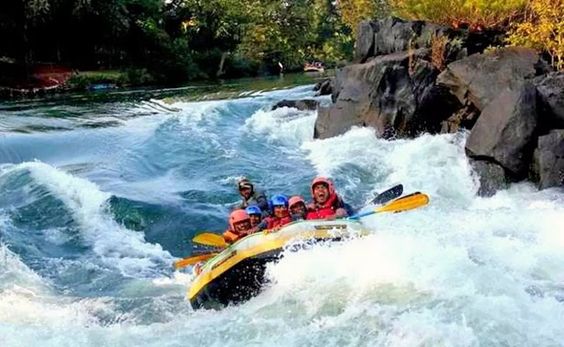How To Prepare For Spring Time White Water River Rafting
The weather is getting warmer, which can mean various things, depending on where you live (watch out for those blackflies, Northeasterners!). But for adrenaline junkies and all-around water enthusiasts, the shift indicates something even more exciting: The return of white-water season.
Spring runoff provides a truly exhilarating experience for river rafters and kayakers. The CFS (cubic feet per second) count is usually at the highest point it will reach all season long, and crowds are often thinner than in midsummer, which means that companies can trot out their smaller boats for a faster ride. Veterans of the pastime will likely already be familiar with the tips found below; however, novices would do well to read on for advice about how best to prepare for the river in springtime.

Dress for the Weather
If you’ve only rafted in high summer, be prepared for colder temperatures—both in and out of the water. Many outfits require that wetsuits be worn on any date preceding Memorial Day, but even if they don’t, it would behoove you to suit up. They aren’t very comfortable when you first put them on—prepare for a lot of wriggling and adjusting on the bumpy bus ride to the put-in spot—but once you hit the water, you’ll be glad for the extra protection.
As a side note to first-timers: If anyone ever told you that it’s possible to take a white-water rafting trip and not get wet, they were lying through their teeth. Even if you don’t opt for a swim (whether scheduled or unscheduled), you are guaranteed to get drenched, so dress accordingly.
Choose your seat wisely
Some rivers in the Northwestern United States can reach up to 15,000 CFS during spring runoff, which is about 10 times their normal flow. Seasoned guides compare the size and weight of one cubic foot of water per second to a basketball filled with sand. Visualize 15,000 of those bad boys cruising through a narrow, rocky gorge, and you’ve got the basic idea. While some tamer rivers will only flow at about half that, you’re still dealing with some huge whitewater.
There are certain rapids where, during a Class V hit, anyone seated in the front of the raft will be quite literally submerged for ten seconds before resurfacing. If this sounds daunting to you, choose a seat in the rear of the craft. You’ll still have an amazing experience, but you won’t bear the brunt of the blow.
Save the big party for after the Trip
Outdoor enthusiasts tend to be a rowdy bunch, subscribing to a “live hard, play hard” philosophy. Combine this with the excitement of arriving at your accommodation for a white-water rafting trip, and it’s all too easy to overindulge on that first night.
Not to sound like a buzzkill, but this is a bad idea. Remember that most rafting trips depart very early in the morning, and sunrise arrives quickly in the spring and early summer. If you’re bleary and hungover, you’ll have a miserable time at best, and put yourself and others at risk at worst. Save the blowout party for post-river—you’ll have more to talk about, without the threat of the six o’clock alarm hanging over everyone’s head.
Beyond this, there are really only two other guidelines to follow: Pay attention during the safety briefing, and have an amazing time on the water!
This article, Colorado’s top vacation destinations this summer, was written by Ryan Thomas for Rocky Mountain Whitewater Rafting. Rocky Mountain Whitewater Rafting has guided thousands of whitewater rafting trips on Clear Creek and throughout Colorado.















